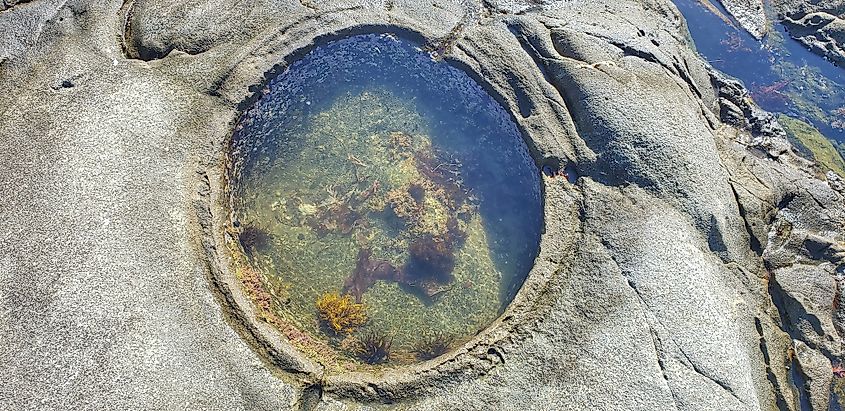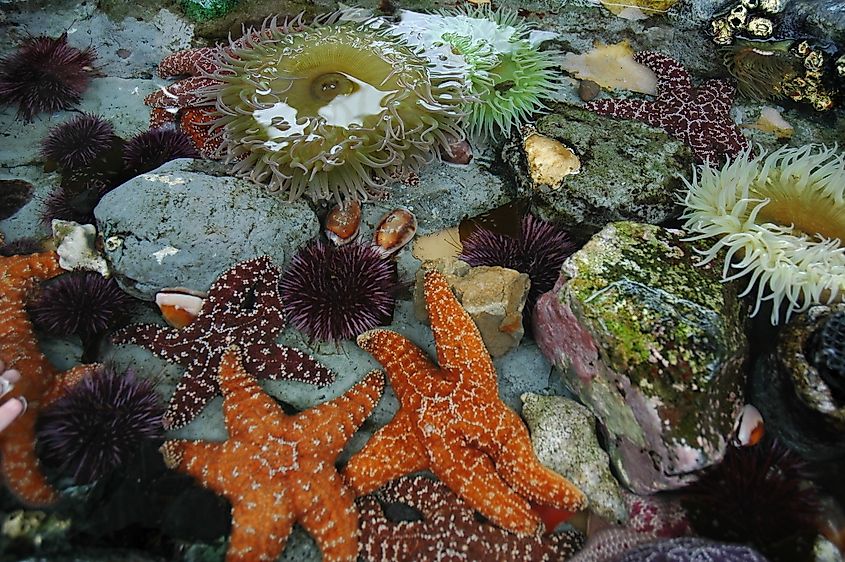Ecosystem

- An ecosystem includes all the living and nonliving factors within a specific area/
- An ecosystem relies on careful balance, where each factor directly or indirectly affects everything else.
- The Earth is made up of various different ecosystem, each which connect together to form a balanced planet.
An ecosystem is the term used to describe all of the organisms - plants, animals etc., as well as all the environmental factors - such as landscape, weather and climate, which exist in a given area to create a functioning interconnected system of life. That ecosystem is a specific geographic area, but includes all factors, both living and nonliving, which exist inside that area.
Biotic And Abiotic
The living portions of a given ecosystem are known as the biotic parts. Biotic, as in biology, includes any living thing. This means all of the animals, plants, insects and even bacteria and tiny organisms which exist within that environmental bubble. The abiotic factors include the landscape and climate, which more specifically would include weather, water sources, rocks, and temperature.
Scale And Size

An ecosystem may seem like a large term, but these systems can range greatly in size. The entire Earth is made up of connected ecosystems, each which fits together with the others around it to make a much larger biome, and further still, a healthy balanced planet. The ecosystems themselves, though, could be very tiny.

One of the smaller examples of ecosystems can be found in tidepools. Tide pools occur when ocean water recedes from a beach or shore, but leaves behind pools or ponds in indentations on the shore. These pools form complete minute ecosystems. They contain photosynthesising plants, like algae and seaweed, which make their own food. Plant eating animals like abalone feed off of this algae, and clams and starfish in turn eat the abalone. The changes in the tide affect each aspect of the ecosystem differently. Seaweed grows best in deeper waters, while crabs need shallow areas to avoid drowning. The continued influx and receding of the tide allows all these animals to thrive in the pools, as they work with the changing abiotic environmental factors.
Connectivity

All parts of an ecosystem are connected, and work together to keep that system balanced and healthy. For example, plant-eating animals within an ecosystem rely on specific vegetation in that area for food. The plants, in turn, can only thrive in certain climates, and with specific amounts of precipitation or in certain temperatures. A change in climate could mean a species of plant dies out, which would then directly affect the animal that eats it. Indirectly, this would affect any animals which eat those prey animals, causing larger indirect consequences. Plants also offer shelter in many cases, and are relied on for safety and protection. If these plants were no longer to exist in their ecosystem, animals or insects would need to adapt, or risk throwing the ecosystem out of balance.
Importance Of Maintaining Balance
While ecosystems are resilient, they are also so deeply connected, that any major change to one element can spell disaster for that system. This is why conservationists, scientists and activists become so deeply concerned with both climate change and human industry and its effect on our planet. While removing one plant - say, a particular type of tree for lumber - may seem relatively harmless, the effects can be wide reaching. Many animals may use those trees for shelter, homes, or even as food sources, and removing one element could easily threaten the entire ecosystem. In the same way, introducing outside species, poaching, or overfishing can remove a key part of an ecosystem which in time may lead to its entire collapse.











